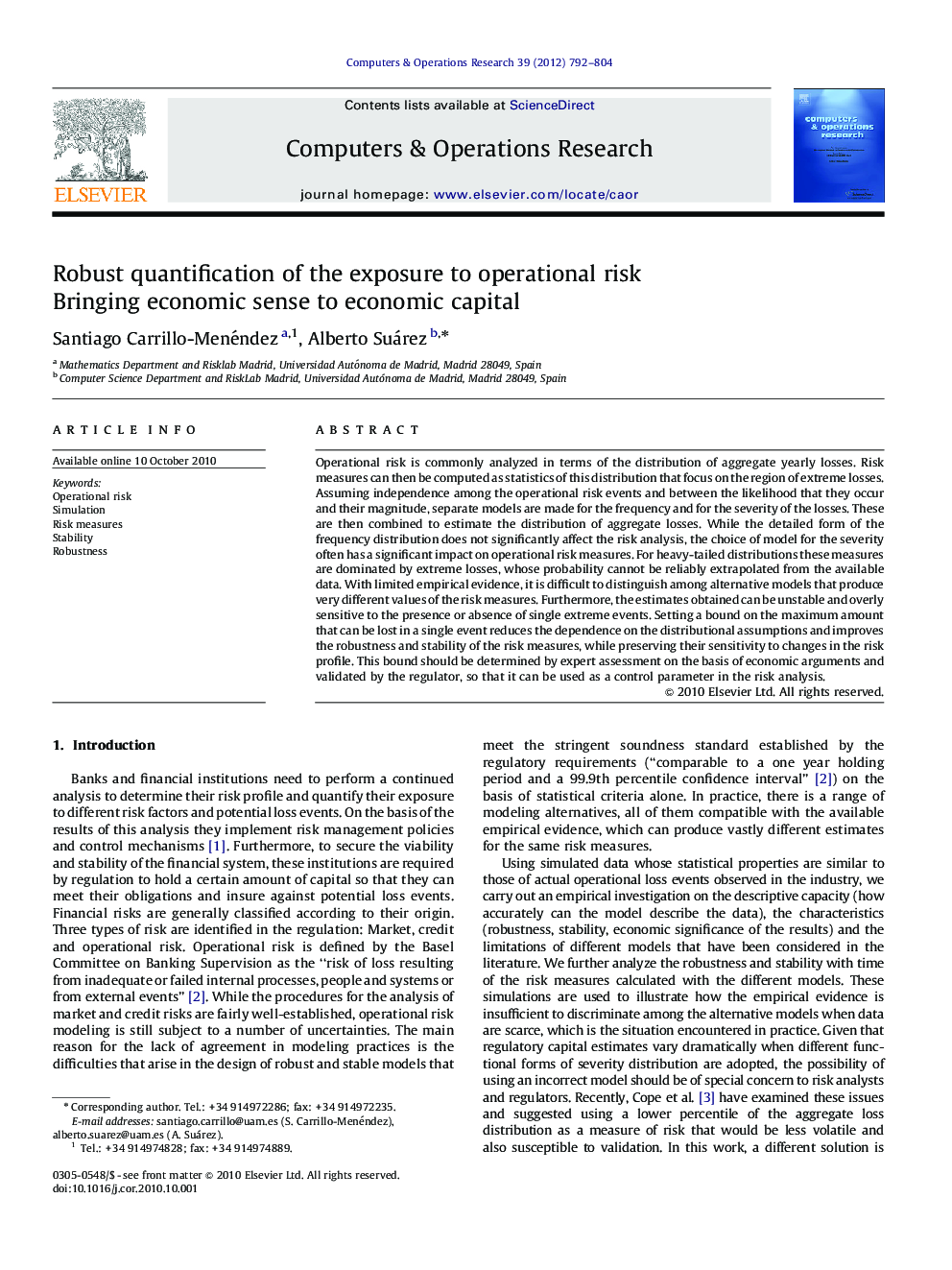| Article ID | Journal | Published Year | Pages | File Type |
|---|---|---|---|---|
| 474720 | Computers & Operations Research | 2012 | 13 Pages |
Operational risk is commonly analyzed in terms of the distribution of aggregate yearly losses. Risk measures can then be computed as statistics of this distribution that focus on the region of extreme losses. Assuming independence among the operational risk events and between the likelihood that they occur and their magnitude, separate models are made for the frequency and for the severity of the losses. These are then combined to estimate the distribution of aggregate losses. While the detailed form of the frequency distribution does not significantly affect the risk analysis, the choice of model for the severity often has a significant impact on operational risk measures. For heavy-tailed distributions these measures are dominated by extreme losses, whose probability cannot be reliably extrapolated from the available data. With limited empirical evidence, it is difficult to distinguish among alternative models that produce very different values of the risk measures. Furthermore, the estimates obtained can be unstable and overly sensitive to the presence or absence of single extreme events. Setting a bound on the maximum amount that can be lost in a single event reduces the dependence on the distributional assumptions and improves the robustness and stability of the risk measures, while preserving their sensitivity to changes in the risk profile. This bound should be determined by expert assessment on the basis of economic arguments and validated by the regulator, so that it can be used as a control parameter in the risk analysis.
